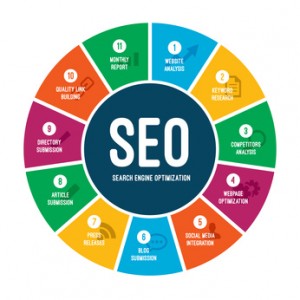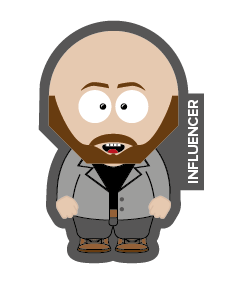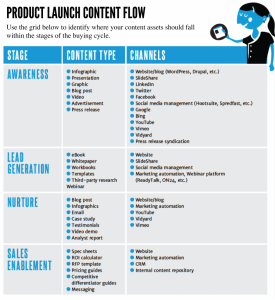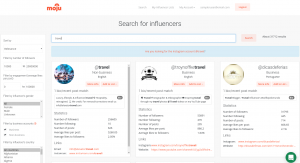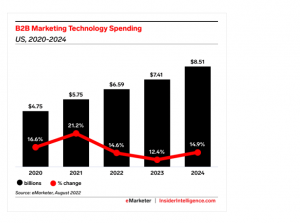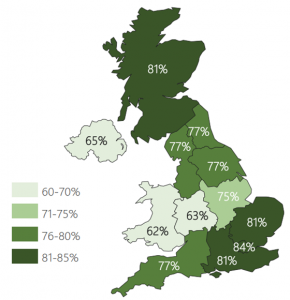— August 21, 2018

jarmoluk / Pixabay
The importance of top-funnel marketing efforts continues to rise, driven by the need to more precisely target, identify and engage prospects.
As demand generation strategies focus more on quality versus quantity and B2B marketing teams face greater pressure to show direct revenue impact, the cost to acquire a qualified lead or contact is going up rapidly. It simply takes more effort to get the right information on the right decision-makers.
Precision is now key – the need for greater intelligence in our initial outreach attempts and each subsequent follow-up to generate positive engagement among target audiences. While techniques and tools like predictive modelling, intent data and account-based targeting hold promise, there are alternative strategies and tactics.
I caught up with Greg Ness, a seasoned B2B marketer and former VP of Worldwide Marketing at CloudVelox (acquired by VMware). After working for several start-up and high-growth tech companies, Greg has honed a clear and powerful point of view (POV) on the topic of managing customer acquisition costs.
In fact, Greg is so adamant about marketing’s need for a more streamlined approach to customer acquisition, he recently started his own boutique firm (Actium Bay Group) to help B2B marketing teams figure it out.
SV: What are the biggest challenges you’ve faced in B2B in the last ten years when it comes to top-of-funnel marketing efforts? We’ve had a few conversations over the years, and I remember you using the term “nuclear winter” to describe the conditions that came about with the rise of auto-dialers and marketing automation platforms. What’s your take?
GN: I think marketers have entered a new era of prospect identity and intent confusion, which is driving up the costs to generate authentic marketing qualified leads and opportunities. It began when publishers shifted from print magazines and stopped making the kinds of investments in contact/reader accuracy (from name, phone, and email to current role) that they needed to make when printing and mailing content. They were, essentially, the gatekeepers of prospect intent and accuracy. And they’re long gone. We responded with marketing automation, various approaches to content marketing, SEO, CPC, social campaigns and auto-dialers to solve the problem (of prospect identity and intent).
Ten-plus years ago we used to tell SDR teams they needed to call each lead at least three times before giving up. That number today at many companies is ten to fifteen calls… to simply identify someone, determine interest, available budget, etc. Here’s the nuclear winter scenario: The higher the number of calls to reach a prospect to determine who they are and any level of interest, the higher the failure rate. So, companies are now accepting 90%+ failure rates in their outbound call centers. OK, so they use auto-dialers… so their teams can make more calls.
Then they send more email to larger populations of leads, with declining open and click rates. I can remember 75% open rates and 15% click rates on email. Today a 40% open rate is commendable, depending upon audience familiarity, brand awareness, etc. Click rates are often well under 3%, especially for new prospects. Then after all the calls and emails with high failure rates, SDRs discover (in many cases) the person they’re calling either isn’t the person they thought they were calling or the click on the article/blog/newsletter or tradeshow badge scan wasn’t a true indicator of interest or budget.
Boom! Customer acquisition costs go through the roof. The solution for many? More calls and emails to more prospects often referred to as “spray and pray.” Bottom line: companies are abusing marketing and call automation solutions and poor lists, creating a nuclear winter scenario for everyone. And SDRs/ISRs bear the brunt of the pain, along with CMOs and the poor people getting flooded with queries from companies they have absolutely no interest in.
SV: So where do you suggest marketers go from here?
GN: The old game should be called spray and “pay” (instead of “pray”). You should invest in enhanced funnel intelligence and productivity, from the top of the funnel to first meeting, to complement what your sales team is doing with Salesforce, etc. The list is at least 50% of the battle, usually more. That makes data-mining strategic. List brokers vary wildly in quality. Then there’s outreach.
I like to pay for performance models when it comes to outbound qualification/prospecting calls for B2B with $ 30k and higher lifetime value (and digital for under $ 10k). Relying solely on headcount (internal or 3rd-party) with raw list prospecting for qualification is a bad idea. It’s simply too expensive and too difficult for most B2B sales efforts. Paying per qualified lead is the best way to go.
SV: We’ve seen many of these issues with our own customers. I mean…we actually created Integrate’s Demand Orchestration Software to help marketers focus efforts. What else can marketers do to cut through the noise to identify interested prospects?
GN: You data mine real buyers based on specific purchase behavior and then validate their availability and interest at a very low cost. I’ve used one firm for about three years and they’ve helped me target prospects based on specific buying patterns (products, vendors, combinations, etc.) versus mere article clicks, which produce false positives that degrade opportunity conversion metrics. Plus, I’m not convinced that someone reading a ton of articles in any specific topic is necessarily a prospect.
Your SDRs/ISRs/BD teams are now working on a much higher success rate basis, setting up more appointments among leads already qualified by purchase (versus click/read) behavior.
SV: It sounds to me higher quality at the top of the funnel…
GN: Exactly! Remember the GIGO (garbage in, garbage out) principal? I’m saying we need to look closely at what goes into the funnel to begin with, the fuel. Most marketers have their bonuses/incentives tied to meaningless quant goals, like MQLs, raw lead counts, clicks, opens versus those counts adjusted for opportunity conversion. Those incentives have spurred a cottage industry of list brokers and email platforms. But they don’t always help sales. And I think the metrics should be closely tied to conversion at a minimum and, ideally, initial/lifetime revenue and profitability. Otherwise we get a destructive blame-game with high turnover, first on the frontline with SDRs then VPs/CMOs.
SV: What kinds of performance results are you seeing out there with this approach?
GN: Results vary based on offering, buyer type, security versus WAN buyer etc. We’re seeing CPLs of $ 100 for phone validated qualified leads with budget/authority established and some intent signals. I’m having to project a bit because of client sales cycles and the usual caveats, but I think conversion rates of 5% – 15% of MQLs to opportunities are to be expected. The program can produce very notable revenue results AND some useful data on pain a lead may have around a previously purchased solution or challenge.
SV: Tell me about your new firm – Actium Bay Group – and how you’re working with clients to tackle this shift?
GN: I created the kind of firm I wanted to hire when I was on the startup side; a firm focused on accelerating top-of-funnel engagement in a way that’s scalable and sustainable and doesn’t require month-to-month consulting spend. Our goal is qualified-lead-conversion-to-meeting rates well above 25%. Sales teams can be two or three times more productive than calling a raw list. And that lead isn’t being shared with competitors.
Clients get better prospects more quickly for higher batting averages at a cost well below alternative sources. Aside from the general sales funnel, I’m convinced this model can also be used specifically for new product launches to minimize the burden on existing sales teams dedicated to profitable, mature revenue streams. A dedicated salesperson can be as productive as a team by being fed better leads.
I like to work with strong CMOs and/or Product/Demand Gen Directors… who are the ones who emerge empowered after 90 – 120 days to exceed expectations.
If you’re interested in discovering how bad leads may be affecting your B2B marketing and demand generation efforts, you can get your copy of the “Cost of Bad Leads Report” here.
Business & Finance Articles on Business 2 Community
(79)
Report Post
